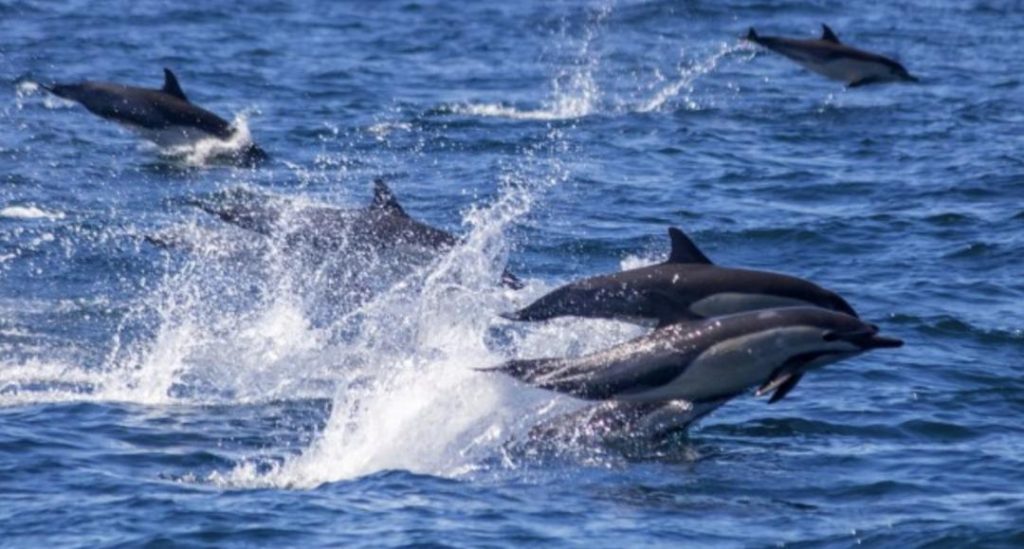
Dolphins & Whales Regularly Socialise with Each Other: Study
In a fascinating discovery, researchers from Griffith University have found that dolphins and whales frequently socialise with each other, engaging in playful interactions that are often mutual. The study, which analyzed videos and photographs of interactions between baleen whales and dolphins, revealed that 19 species of dolphins and whales participate in these social events, which can occur on multiple occasions.
The research team, led by Dr. Nicola Hodgkins, studied 199 separate events of dolphin-whale interactions, covering a range of species and behaviors. The findings, published in the journal Marine Mammal Science, provide new insights into the complex social dynamics between these two groups of marine mammals.
One of the most common interactions observed was dolphins swimming near the head of the whale. This behavior was seen in 43% of the events analyzed, suggesting that dolphins are drawn to the whales’ social spaces. Bottlenose dolphins were found to be the most involved dolphin species, participating in 71% of the interactions.
Dr. Hodgkins and her team also observed other forms of social interaction, including dolphins playing with whale blowholes, swimming alongside whales, and even attempting to ride the whales’ waves. These playful interactions were not limited to specific species or age groups, with adults and juveniles of both dolphins and whales participating in the social events.
The study’s findings have significant implications for our understanding of marine mammal behavior and social dynamics. While dolphins and whales are often thought of as separate entities, this research shows that they are capable of forming complex social bonds across species lines.
“This study highlights the importance of considering the social dynamics between different species in our oceans,” said Dr. Hodgkins. “These interactions can provide valuable insights into the behavior, ecology, and conservation of marine mammals, and can inform our management and conservation efforts.”
The research also has implications for our understanding of intelligence and cognition in marine mammals. Dolphins and whales are known for their advanced cognitive abilities, and their ability to form social bonds with other species suggests that they may be capable of complex problem-solving and communication.
In addition to its scientific significance, this research has also sparked the imagination of the general public. The notion of dolphins and whales playing together in the ocean is a captivating one, and has the potential to inspire a new generation of marine conservationists and researchers.
As Dr. Hodgkins noted, “This study shows that even in the wild, dolphins and whales are capable of forming strong social bonds and engaging in playful behavior. It’s a reminder of the beauty and complexity of marine ecosystems, and the importance of protecting and preserving them for future generations.”
In conclusion, the study of dolphin-whale interactions provides a fascinating glimpse into the complex social dynamics of our oceans. By studying the behavior of these two groups of marine mammals, we can gain a deeper understanding of their social bonds, cognitive abilities, and ecological importance. As we continue to explore and learn more about our oceans, we are reminded of the importance of protecting and preserving these incredible ecosystems for generations to come.






